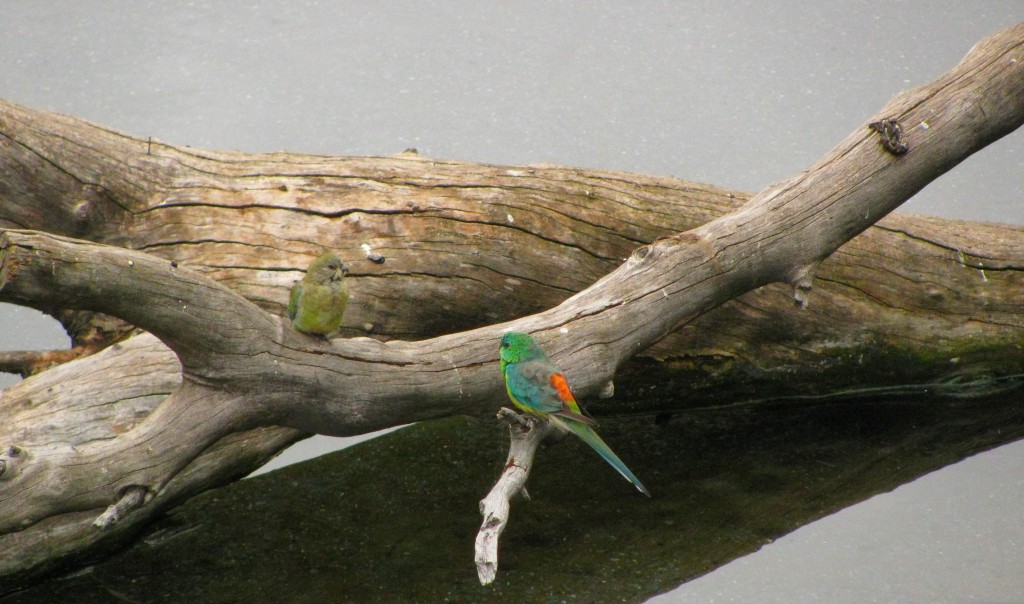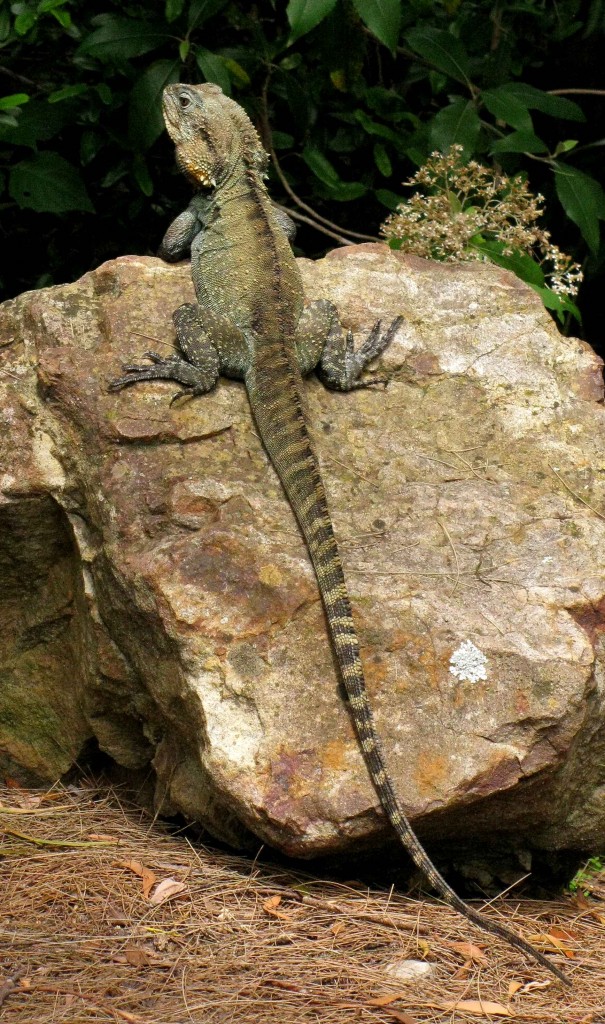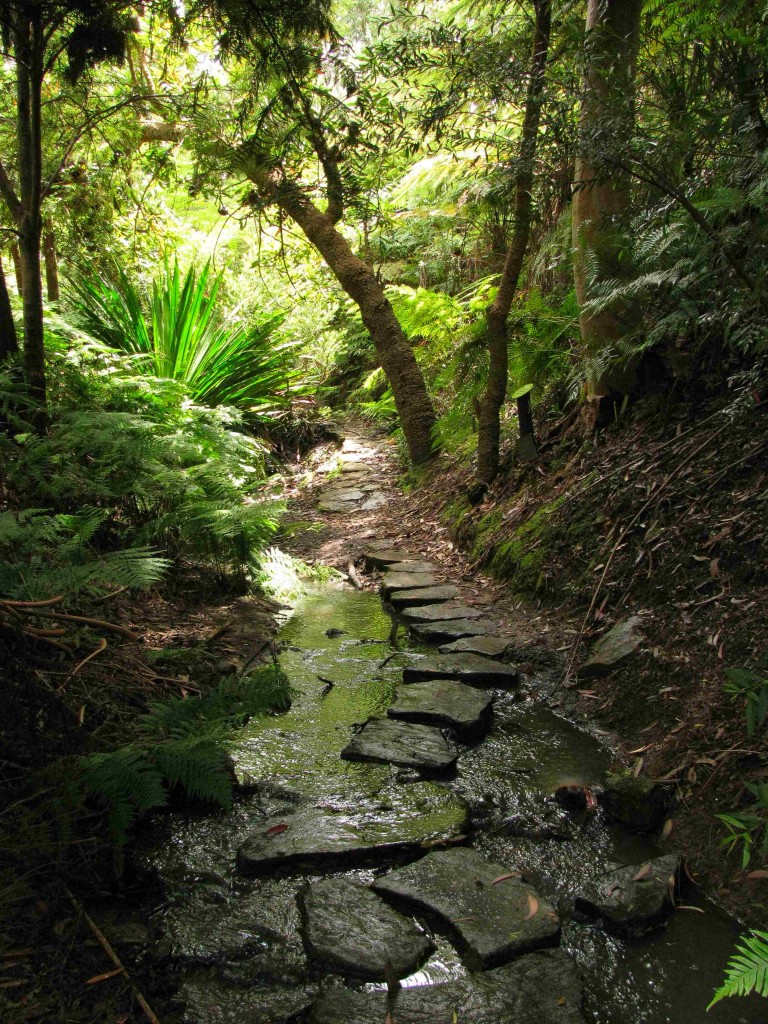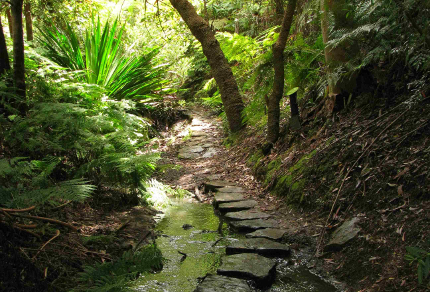Cloud brooded above Canberra this morning, blanketing the sky over Lake Burley Griffin as Vilis and I strode quickly to the National Museum of Australia. Having a day free from his ecology conference, Vilis chose to visit the museum and Australian National Botanic Gardens based on the effusive descriptions I’d given him after my excursions to those Canberra attractions yesterday. So I tagged along and gleaned more from both.
Pausing outside the museum to look for the red-rumped parrots I’d seen yesterday, I was thrilled to observe five pairs of red-rumps perched on the dead tree in the water feature of the Garden of Australian Dreams. The tree had a number of hollow cavities formed within the broken trunk and stumps of large, broken-off branches; these I realized the parrots were using as nesting sites. Vilis and I watched the parrots enter and leave their nest sites, one of which we could see was lined with dried leaves.

Female and Male Red-rumped Parrots (© Magi Nams)
In the museum, I led Vilis first to the Canning Stock Route exhibit, where today I immediately noted the symbolism for wells and waterholes in the vivid Aboriginal paintings – a facet of the artwork that had completely evaded me yesterday until I learned of Alfred Canning’s brutal use of Martu ‘guides’ to locate traditional water soaks and holes while surveying the route for the CSR. During a royal inquiry into his treatment of Aboriginals during the route exploration, Canning stated, “I would not attempt to make another exploration in that country or in similar country unless I were allowed to use the natives in a reasonable way. I would not attempt it because I know it would be an utter failure.” Vilis commented that Canning’s treatment of the Martu men – chaining, food deprivation, allowing them to drink only salty water – would be considered inhumane for any animal, let alone human beings. An intriguing bit of CSR history told that in 1957, a mining survey party landed near Well 40 and interacted with Aboriginals who had never before seen a chopper. Some had never seen white people. The chopper crew flew two seriously ill members of the family community to Balgo for medical aid.
After a quick look at the Royal Society exhibit, we entered a revolving theatre to view the Circa presentation, which compressed 60,000 years of Australian history into a 12-minute collage of photographs and sound that gave a nod to the continent’s natural features and chronicled its social and cultural progression to the present. Then we browsed our way through the Old New Land exhibit, which featured some of Australia’s unique flora and fauna. I learned that the last surviving member of a species is called an endling (think Tasmanian tiger), and that whereas some of the 19th– and 20th-century Europeans who described the floral and faunal denizens of this old continent that was new to them kept an open mind, others were hopelessly bogged down in the scientific trappings of Europe and lacked both understanding and appreciation of Australia’s biota. Consider the following quotes taken from the exhibit:
J. Martin, 1830’s: ‘Trees retained their leaves and shed their bark instead, the swans were black, the eagles white, the bees were stingless, some mammals had pockets, others laid eggs, it was warmest on the hills and coolest in the valleys, even the blackberries were red.’
Arthur Nichols, 1883: ‘The natives… have exhibited their ignorance of the natural history of the platypus by asserting that the young are produced from eggs.‘
John Gould, 1848: ‘The great majority of its quadrupeds… are the very lowest of the Mammalia… while the low organisation of botany is indicated by the remarkable absence of fruit-bearing trees…‘
William Swainson, 1925: ‘Australasia… presents to the philosophic Naturalist a more interesting field… than any other.‘

Water Dragon in Australian National Botanic Gardens (© Magi Nams)
After lunch at the museum, we strode to the Australian National Botanic Gardens, where I showed Vilis water dragons sunning beside a pool, and pointed out eastern spinebills, red wattlebirds, and crimson rosellas. Then, while Vilis headed west through the gardens to climb Black Mountain, I explored sections of the gardens I had not yet seen and revelled in the cool freshness of the rainforest gully and a gorge in the Sydney area flora planting. Periodically, I cruised past the eucalypt lawns and was at last rewarded with a sighting of a female gang-gang cockatoo, her dark brown-grey plumage delicately scalloped with pink on her breast and belly. I scanned the treetops for a fiery-headed male gang-gang, but my efforts went unrewarded. Instead, I felt a little like a voyeur as I watched a red wattlebird bathing in a trickle among rocks, the nectarivore flapping its wings and splashing liquid silver into the air, its little pink-red cheek wattles jiggling. Superb fairy-wrens sang light, cheerful songs while flitting from shrub to shrub, the males leading me on with their striking blue-black plumage but never remaining still in one position long enough for me to photograph them. Again, clouds of butterflies (common browns) floated in the vicinity of flowering shrubs, their silent, fluttering and bobbing flight a thing of orange-splashed beauty.

Gorge Path in Australian National Botanic Gardens (© Magi Nams)
In late afternoon, Vilis and I returned to Novotel, where we spiffed up a bit and then attended the ecology conference banquet held in Old Parliament House at Capital Hill on the south side of Lake Burley Griffin. During the half-hour of mingling before the meal, biology entertainers displayed a blue-tongued lizard, plump and cute cockroaches (Oz has nearly 400 species of cockroaches, most of which are not pests), and huge stick insects with legspans wide enough to cover an adult human’s face. Vilis and I cruised the foyer, studying portrait paintings of former Australian prime ministers, and when seated in the dining hall, chatted with Aussie women seated beside us. Alison, from Tasmania, informed me that Vilis and I had chosen the best time of year to visit Tassie (mid- to late March), and that spring is a wild time of wind and rainstorms on that most southern Australian state. Gillian, from Darwin in the Northern Territory at the absolute opposite end of the country from Tasmania, informed us that she had embarked upon a Ph.D. to investigate the cultural value of wildlife, the idea being that if wildlife can be demonstrated to have cultural value, the likelihood of its being conserved is much greater. The dining hall thrummed with voices of scientists present at the conference to explore possibilities of sustaining this magnificent continent’s ecology. I hoped they would succeed.
Today’s birds: magpie-larks, noisy miners, Australian magpies, Australian ravens, red wattlebirds, welcome swallows, crested pigeons, crimson rosellas, black swans, Australian wood ducks, red-rumped parrots, eastern spinebills, olive-backed oriole, *gang-gang cockatoo, New Holland honeyeaters, white-browed scrubwrens, laughing kookaburra, superb fairy-wrens, Pacific black ducks, masked lapwings, dusky moorhens, silver gull. Also observed rabbits, which Vilis described as ‘cute pests’, water dragons, common brown butterflies, and a common brushtail possum that scampered up into a tree from gardens surrounding a daycare centre positioned beside office towers. (*lifelist sighting)


